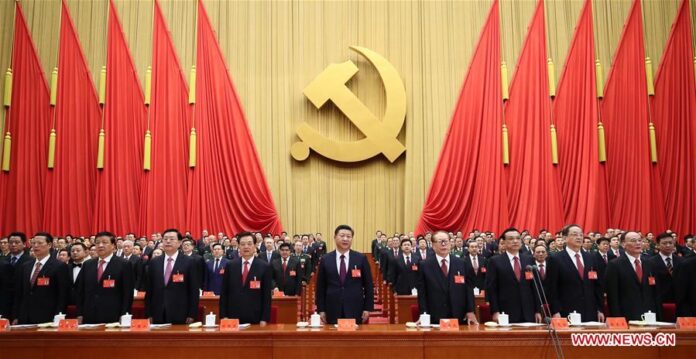ISLAMABAD: As the Communist Party of China (CPC) is expected to convene a crucial reform-themed meeting next week, a look back on China’s remarkable achievements in comprehensively deepening reform and opening-up over the past decade, which underpinned China’s high-quality development against a complex global geo-economic situation, offers a critical window into what to expect from the upcoming meeting.
The third plenary session of the CPC Central Committee, often referred to as the third plenum, has carried enormous significance in China’s economic and social development, as it has drawn up the reform agenda for years since the third plenum in 1978, which marked the beginning of China’s reform and opening-up that helped lift China from a backward agrarian country to the world’s second-largest economy.
Since the third plenum of the 18th CPC Central Committee, convened in 2013, ushered in an era of comprehensively deepening reform, China has witnessed greater social and economic development despite external and internal challenges and become a pioneer and builder of world peace and development, and a driving force in shaping a more just and effective global governance structure.
Today, as the world navigates its way through the mist of escalating geopolitical tensions, flagging economic growth, and global economic and financial fragmentation triggered by some Western powers’ rising protectionism, domestic and global expectations for the upcoming third plenum are running high.
Many in China and around the world are anticipating that the meeting will spur the world’s second-largest economy toward higher level development through further deepening reform and opening-up and contribute certainty and stability to a world in turbulence.
Since the Third Plenary Session of the 18th Communist Party of China (CPC) Central Committee, China has witnessed comprehensive achievements in its reform and opening-up, paving ways for the country to realize its second centenary goal of building a modern socialist country that is prosperous, strong, democratic, culturally advanced and harmonious by 2049, Chinese economists said.
Since Chinese leader Xi Jinping took the top office more than a decade ago, China has entered a “new era.” As the world today is undergoing major changes unseen in a century, the country’s economic strength has grown, and its international influence has continued to rise. Reform is the hallmark of this era.
As the CPC will convene on July 15 in Beijing the third plenary session of its 20th central committee, which will primarily examine issues related to further comprehensively deepening reform and advancing Chinese modernization, analysts noted that China’s economic progress fostered by the Party’s relentless efforts in forging ahead reform and opening-up has contributed to global prosperity and security.
China’s economy has achieved a historic rise, with GDP growing to 126 trillion yuan ($18 trillion) in 2023 from 53.9 trillion yuan in 2012. For years, China has contributed about 30 percent of global GDP growth.
Under the strong leadership of the CPC Central Committee with Comrade Xi Jinping at its core, the country has conducted in-depth reforms in both building the unified domestic market and forming new structure of all-round opening-up, having scored remarkable achievements in promoting the market economy, sci-tech innovations and higher-level opening-up.
One of hallmarks in the past years is that the Chinese economy was able to maintain a relatively fast growth rate while conducting its structural reforms that give the economy new vitality for more sustainable and high-quality growth.
Along with the country’s policies to optimize resources allocation and foster the transition of traditional industries, emerging industries saw fast expansion and the services industry continued to grow in prominence.
A reform decision in 2013 said that it was China’s aim for the market to play a “decisive” role in allocating resources.
Through the implementation of the supply-side structural reform, the country pushed the economy toward high-quality development and moving to construct a new development pattern. This was achieved while the country is being confronted with major challenges, such as downward economic pressure due to the lingering impact from the COVID-19 pandemic, rising protectionism and suppression from Western nations, and risks associated with the real estate sector and local government debt issues.
From 2012 to 2023, the proportion of the value-added output from high-tech manufacturing in overall value-added output of large industrial enterprises has grown from 9.4 percent to 15.7 percent, while that of the equipment manufacturing sector rose from 28 percent to 33.6 percent, according to a report by Xinhua.
The added value of the services sector accounted for 54.6 percent of the GDP in 2023, up from 45.5 percent in 2012, while the contribution of domestic demand to the nation’s economic growth has increased from 105.8 percent in 2012 to 111.4 percent in 2023.






















